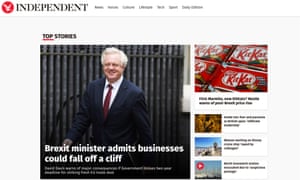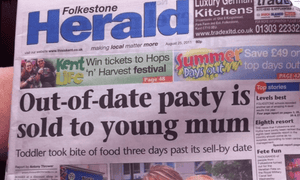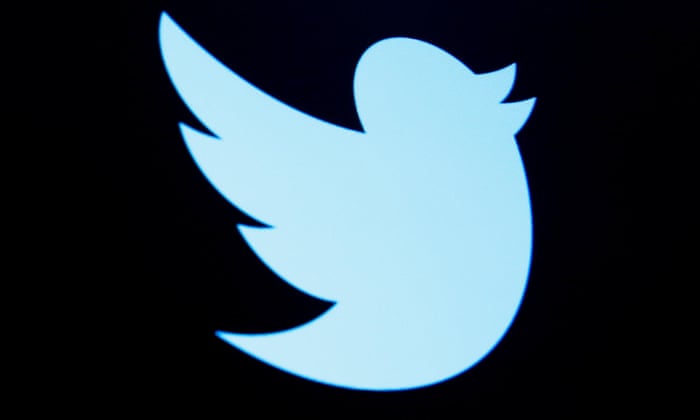News is accessed mostly by audiences on the television, through internet or apps, the traditional print media such as newspapers and even radio. In recent years, there has been a significant decline in the way news is accessed by audiences in the sense that traditional media is no longer favoured by the populace. Audiences are a lot more likely to use digital media as a way to access news and information.
How do different age demographics access news in the UK?
According to the Ofcom report, almost 86% of people aged 55+ access news through television. However, the almost 59% of the younger generation access their news and information through new and digital media such as the internet or news applications. Traditional platforms such as print media aren't as popular with younger people as they are only used by about 21% of them whilst almost 44% of people aged 55+ use them.
Does socio-economic status change attitudes to news? If so, how?
Socio-economic status has a huge impact on the attitudes and the way news is consumed by different people in different social classes. For example, people in the AB socio-economic group are more likely than those in the DE socio-economic
group to consume news on any of the four main platform. Television is used by 71% people in the AB socio-economic but 67% by those in the DE group. The internet is largely used by the AB group at 50% whilst only 29% of the DE group uses it.
How many different sources of news are used on average? How does differ between different groups?
On average, 3.5 different sources are used out of the 4 main platforms in 2015. However in 2014, this was at 3.8 which suggest that audiences are consuming less news this year than the last.
How has news consumption through television changed in recent years?
In recent years, the consumption of news through television has decreased since 2013. BARB figures show that each adult watched 108 hours of national and international news on
television in 2014. However this has been a decrease of seven hours since 2013 (when the average number of hours was 115).
How much has news consumption through newspapers declined since 2005?
In the past ten years the reach and consumption of newspapers has declined considerably from 72.4% of all adults reading newspapers in 2005 to 45.4% in 2015. A total decrease of 27%.
How does newspaper reach differ by age group?
Newspaper reach differs greatly by age group as 29.3% of 15-24s are newspaper readers compared to 67.9% of over-65s.
Which are the most popular newspapers and websites in the UK? What do you know about those newspapers' political viewpoints?
In the UK, the most popular newspapers are The Sun, Daily Mail, Daily Mirror, Metro and The Times. Their viewpoints and political standings vary from left to right wing.
How does online news consumption differ for age, gender and socio-economic status?
Online news consumption varies quite considerably in terms of age, gender and socio-economic group. The Ofcom report states that 59% 16-24 year olds in the UK use the internet or apps for news while only 23% of those aged 55+ use them. Also, 53% of those in the ABC1 socio-economic group use online sources for news, compared to the C2DE socio-economic group, only 32% of them use online sources for news.
What percentage of people use social media to access news? How does this differ by age and socio-economic status?
From the Ofcom report 43% of respondents use social media sites in order to access the news. In terms of age, 61% of 16-24s who use the digital media for news say they use social media sites compared to 26% of those aged 55+. In terms of a socio-economic standppint, people in the DE(52%) group are more likely to use digital media than those in AB (40%) to use social media sites for news.
What percentage of users only use social media sites for their news?
Only 10% of users use only social media sites for their news.
What are the most popular online sites for news?
The Sun is the most popular online site for news in the UK, with around 5.2 million users. The Daily Mail comes second with 3.5 million users.
What percentage of 16-24 year olds access news mostly from social media?
About 61% of 16-24s access their news from social media sites.
How do audiences find stories online? Do you follow links or go to the homepage of the news provider?
Many social media websites offer the sharing of news articles and links between users. Websites such as Facebook or Twitter have trending topics based on current affairs and news. Other websites such as the BBC have applications which update and alert audiences of breaking news or current affairs through headlines on their main website.
New/digital media: audience and institution
What are the benefits for audiences from the changes new and digital media have had on the news industry?
Audiences have greatly benefited from the changes that new and digital media has had on the news industry. This is has essentially created a huge freedom of choice amongst audiences in the sense that they can now choose what type of news that they want, when they want it. Each individual can appropriately cater and control the way and what type of news they consume depending on their own personal interests or needs.
What are the benefits for institutions from the changes new and digital media have had on the news industry?
Institutions have also benefited from the changes that new and digital media has had on the news industry. With the advancement in technology in new and digital media, audiences are a lot more interconnected and news institutions can now send information and updates almost instantaneously such as the BBC which has an app for users to get alerts on their mobiles. This means that institutions can always be engaging with their audiences.
What are the downsides for audiences as a result of new and digital media in news?
As a result of new and digital media in news, audiences also are affected by the negative impacts. An few examples of this might be that new and digital media news is a lot more citizen journalism and therefore is not as accurate or consistent as traditional news which are proofread and thoroughly fact checked.
What are the downsides for institutions as a result of new and digital media in news?
Institutions have also been affected by the negative impacts of new and digital media in news. Many institutions which are owned by the same person, for example, Rupert Murdoch no longer have as much as influence on their audiences as they used to. This is because the variety of news sources has increased and audiences are more likely to criticise and question news institutions and make their own conclusions based on their own perspectives.
Who has benefited most from the changes new and digital media have had on the news industry - audiences or institutions?
I personally think that audiences have benefited a lot more from the changes that new and digital media has had on the news industry. This is because it has allowed the audiences to be a lot more flexible in what they choose to consume, but also in the sense that it has allowed a greater ease of access and increased the sharing of information amongst everyone. This, in theory, should show that there is less prejudice and ignorance amongst society, however current affairs show that this is not the case. Therefore, one could argue that allowing the audiences to have too much freedom could also be bad thing as those with the most amount of prejudice and ignorance are more likely to speak out louder than those that aren't as prejudiced, due to freedom of speech.







